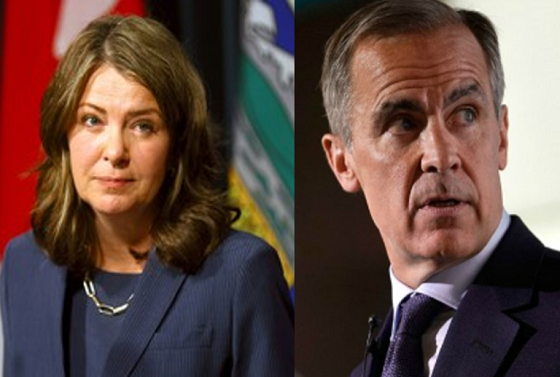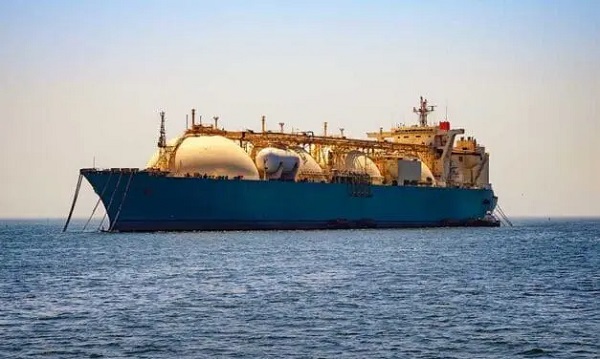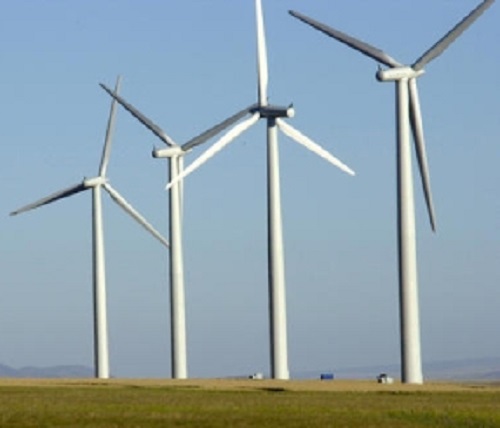Energy
Trump Admin Torpedoing Biden’s Oil And Gas Crackdown


From the Daily Caller News Foundation
By Audrey Streb
The Trump administration is rolling back President Joe Biden’s restrictions on oil and gas, planning 21 lease sales in 2025 — a sharp contrast to Biden’s first year, which saw none.
The Department of the Interior (DOI) and the Bureau of Land Management (BLM) have already held 11 lease sales under Trump generating over $110 million for Americans, and plan to host 10 more in 2025, the agency told the Daily Caller News Foundation. While the Biden administration imposed a sweeping offshore drilling ban and greenlit a record-low offshore oil and gas leasing schedule, the Trump administration is working to reopen development on federal lands and waters.
“President Donald Trump has revived American energy. While the Biden administration left our energy resources to waste at the cost of taxpayers, Americans can feel relief knowing that they now have an administration laser focused on unleashing our domestic energy sources, lowering costs, and securing a more affordable and reliable energy future,” Interior Secretary Doug Burgum told the DCNF. “The number of new oil and gas lease sales simply speak for themselves.”
Bureau of Land Management (BLM) has reported 3,608 new oil and gas permits in Trump’s second term thus far, compared to 2,528 permits during the Biden administration, according to the DOI. Trump and the DOI have approved 43% more federal drilling permits than his predecessors had at the same point in their presidencies, according to the agency.
The DOI has also opened more than 450,000 acres of federal land for potential energy development, and the DOI and BLM are set to approve more drilling permits than any other fiscal year in the past 15 years, the agency said.
On his first day back in the Oval Office, Trump signed an executive order to “unleash American energy” and declared a national energy emergency. The One Big Beautiful Bill Act (OBBBA) further directed the DOI to open more domestic energy exploration opportunities, ordering the agency to “immediately resume onshore quarterly lease sales in specified states.”
Trump has emphasized bolstering conventional resources, which stands in contrast to Biden’s stifling of the oil and gas industry, as he froze liquified natural gas (LNG) exports, blocked the major Keystone XL pipeline and halted BLM lease approvals on his first day as president. Biden instead championed a green energy agenda, pushing for major wind and solar projects through billions in subsidies, loans and grants.
Notably, the National Oceanic and Atmospheric Administration (NOAA) previously confirmed to the DCNF that the Biden administration failed to adequately review the environmental impacts of certain offshore wind projects before approving them. The Trump administration has cracked down on offshore wind, halting many major projects and reviewing several more, with Burgum arguing that the energy resource the Biden administration favored is “not reliable enough” at an event on Sept. 10.
Additionally, gasoline prices have been dropping nationally in recent months, with costs hitting four-year lows headed into summer and Labor Day weekend, according to GasBuddy and the American Automobile Association. The average retail price for gasoline is projected to keep dropping due to falling oil prices, according to data from the Energy Information Administration.
“[Oil] prices are not set by current supplies. They’re set by future expectations,” Diana Furchtgott-Roth, director of the Heritage Foundation’s Center for Energy, Climate, and Environment, told the DCNF previously. “President Donald Trump is sending signals that the oil industry here is going to be very vibrant. He’s shrinking permitting time for fossil fuel projects, so expectations for fossil fuel supply in the United States are great.”
Energy
The IEA’s Peak Oil Fever Dream Looks To Be In Full Collapse


From the Daily Caller News Foundation
U.S. Energy Secretary Chris Wright warned International Energy Agency (IEA) head Fatih Birol in July that he was considering cancelling America’s membership in and funding of its activities due to its increasingly political nature.
Specifically, Wright pointed to the agency’s modeling methods used to compile its various reports and projections, which the Secretary and many others believe have trended more into the realm of advocacy than fact-based analysis in recent years.
That trend has long been clear and is a direct result of an intentional shift in the IEA’s mission that evolved in the months during and following the COVID pandemic. In 2022, the agency’s board of governors reinforced this changed mission away from the analysis of real energy-related data and policies to one of producing reports to support and “guide countries as they build net-zero emission energy systems to comply with internationally agreed climate goals” consistent with the Paris Climate Agreement of 2016.
Dear Readers:
As a nonprofit, we are dependent on the generosity of our readers.
Please consider making a small donation of any amount here.
Thank you!
One step Birol and his team took to incorporate its new role as cheerleader for an energy transition that isn’t actually happening was to eliminate the “current policies” modeling scenario which had long formed the base case for its periodic projections. That sterile analysis of the facts on the ground was replaced it with a more aspirational set of assumptions based on the announced policy intentions of governments around the world. Using this new method based more on hope and dreams than facts on the ground unsurprisingly led the IEA to begin famously predicting a peak in global oil demand by 2029, something no one else sees coming.
Those projections have helped promote the belief among policymakers and investors that a high percentage of current oil company reserves would wind up becoming stranded assets, thus artificially – and many would contend falsely – deflating the value of their company stocks. This unfounded belief has also helped discourage banks from allocating capital to funding exploration for additional oil reserves that the world will almost certainly require in the decades to come.
Secretary Wright, in his role as leading energy policymaker for an administration more focused on dealing with the realities of America’s energy security needs than the fever dreams of the far-left climate alarm lobby, determined that investing millions of taxpayer dollars in IEA’s advocacy efforts each year was a poor use of his department’s budget. So, in an interview with Bloomberg in July, Wright said, “We will do one of two things: we will reform the way the IEA operates, or we will withdraw,” adding that his “strong preference is to reform it.”
Lo and behold, less than two months later, Javier Blas says in a September 10 Bloomberg op/ed headlined “The Myth of Peak Fossil Fuel Demand is Crumbling,” that the IEA will reincorporate its “current policies” scenario in its upcoming annual report. Blas notes that, “the annual report being prepared by the International Energy Agency… shows the alternative — decades more of robust fossil-fuel use, with oil and gas demand growing over the next 25 years — isn’t just possible but probable.”
On his X account, Blas posted a chart showing that, instead of projecting a “peak” of crude oil demand prior to 2030, IEA’s “current policies” scenario will be more in line with recent projections by both OPEC and ExxonMobil showing crude demand continuing to rise through the year 2050 and beyond.
Whether that is a concession to Secretary Wright’s concerns or to simple reality on the ground is not clear. Regardless, it is without question a clear about-face which hopefully signals a return by the IEA to its original mission to serve as a reliable analyst and producer of fact-based information about the global energy situation.
The global community has no shortage of well-funded advocates for the aspirational goals of the climate alarmist community. If this pending return to reality by the IEA in its upcoming annual report signals an end to its efforts to be included among that crowded field, that will be a win for everyone, regardless of the motivations behind it.
Canadian Energy Centre
Emissions cap will end Canada’s energy superpower dream

From the Canadian Energy Centre
By Will Gibson
Study finds legislation’s massive cost outweighs any environmental benefit
The negative economic impact of Canada’s proposed oil and gas emissions cap will be much larger than previously projected, warns a study by the Center for North American Prosperity and Security (CNAPS).
The report concluded that the cost of the emissions cap far exceeds any benefit from emissions reduction within Canada, and it could push global emissions higher instead of lower.
Based on findings this March by the Office of the Parliamentary Budget Officer (PBO), CNAPS pegs the cost of the cap to be up to $289,000 per tonne of reduced emissions.
That’s more than 3,600 times the cost of the $80-per-tonne federal carbon tax eliminated this spring.
The proposed cap has already chilled investment as Canada’s policymakers look to “nation-building” projects to strengthen the economy, said lead author Heather Exner-Pirot.
“Why would any proponent invest in Canada with this hanging over it? That’s why no other country is talking about an emissions cap on its energy sector,” said Exner-Pirot, director of energy, natural resources and environment at the Macdonald-Laurier Institute.
Federal policy has also stifled discussion of these issues, she said. Two of the CNAPS study’s co-authors withdrew their names based on legal advice related to the government’s controversial “anti-greenwashing” legislation.
“Legitimate debate should not be stifled in Canada on this or any government policy,” said Exner-Pirot.
“Canadians deserve open public dialogue, especially on policies of this economic magnitude.”
Carbon leakage
To better understand the impact of the cap, CNAPS researchers expanded the PBO’s estimates to reflect impacts beyond Canada’s borders.
“The problem is something called carbon leakage. We know that while some regions have reduced their emissions, other jurisdictions have increased their emissions,” said Exner-Pirot.
“Western Europe, for example, has de-industrialized but emissions in China are [going up like] a hockey stick, so all it’s done is move factories and plants from Europe to China along with the emissions.”
Similarly, the Canadian oil and gas production cut by the cap will be replaced in global markets by other producers, she said. There is no reason to assume capping oil and gas emissions in Canada will affect global demand.
The federal budget office assumed the legislation would reduce emissions by 7.1 million tonnes. CNAPS researchers applied that exclusively to Canada’s oil sands.
Here’s the catch: on average, oil sands crude is only about 1 to 3 percent more carbon-intensive than the average crude oil used globally (with some facilities emitting less than the global average).
So, instead of the cap reducing world emissions by 7.1 million tonnes, the real cut would be only 1 to 3 percent of that total, or about 71,000 to 213,000 tonnes worldwide.
In that case, using the PBO’s estimate of a $20.5 billion cost for the cap in 2032, the price of carbon is equivalent to $96,000 to $289,000 per tonne.
Economic pain with no environmental gain
Exner-Pirot said doing the same math with Canada’s “conventional” or non-oil sands production makes the situation “absurd.”
That’s because Canadian conventional oil and natural gas have lower emissions intensity than global averages. So reducing that production would actually increase global emissions, resulting in an infinite price per tonne of carbon.
“This proposal creates economic pain with no environmental gain,” said Samantha Dagres, spokesperson for the Montreal Economic Institute.
“By capping emissions here, you are signalling to investors that Canada isn’t interested in investment. Production will move to jurisdictions with poorer environmental standards as well as bad records on human rights.”
There’s growing awareness about the importance of the energy sector to Canada’s prosperity, she said.
“The public has shown a real appetite for Canada to become an energy superpower. That’s why a June poll found 73 per cent of Canadians, including 59 per cent in Quebec, support pipelines.”
Industries need Canadian energy
Dennis Darby, CEO of Canadian Manufacturers & Exporters (CME), warns the cap threatens Canada’s broader economic interests due to its outsized impact beyond the energy sector.
“Our industries run on Canadian energy. Canada should not unnecessarily hamstring itself relative to our competitors in the rest of the world,” said Darby.
CME represents firms responsible for over 80 per cent of Canada’s manufacturing output and 90 per cent of its exports.
Rather than the cap legislation, the Ottawa-based organization wants the federal government to offer incentives for sectors to reduce their emissions.
“We strongly believe in the carrot approach and see the market pushing our members to get cleaner,” said Darby.
-

 Censorship Industrial Complex1 day ago
Censorship Industrial Complex1 day agoFreedom of speech under threat on university campuses in Canada
-

 Alberta19 hours ago
Alberta19 hours agoOttawa’s destructive federal energy policies and Premier Danielle Smith’s three part solution
-

 Business1 day ago
Business1 day agoCarney engaging in Orwellian doublethink with federal budget rhetoric
-

 Alberta1 day ago
Alberta1 day agoIs Alberta getting ripped off by Ottawa? The numbers say yes
-

 Energy1 day ago
Energy1 day agoCanada’s LNG breakthrough must be just the beginning
-

 Business1 day ago
Business1 day agoCourt’s ‘Aboriginal title’ ruling further damages B.C.’s investment climate
-

 Business1 day ago
Business1 day agoManitoba Must Act Now To Develop Its Northern Ports
-

 Agriculture18 hours ago
Agriculture18 hours agoIn the USA, Food Trumps Green Energy, Wind And Solar



